HEP Plin Opens Office Building in Slatina
May 24, 2021 - The HEP Plin national gas provider opened a new office building in Slatina, an investment worth HRK 6.5 million, Croatia's national electricity provider (HEP) said on Monday, adding that it was continuing to develop its gas business.
The Slatina plant, one of HEP Plin's ten stations, employs eight workers, operates a distribution grid of 227 kilometers, and supplies 4,077 clients, of which 3,363 are households and 714 industrial consumers. In 2020, 86 million-kilowatt hours (kWh) of gas were delivered to consumers, HEP said in a press release.
HEP Plin, which is part of the HEP Group, manages 4,419 kilometers of gas networks in Osijek-Baranja, Požega-Slavonia, Virovitica-Podravina, Vukovar-Srijem and Krapina-Zagorje counties. It is the biggest distributor in Croatia in terms of the length of its gas grid. With almost 100,000 consumers, HEP Plin is one of the largest gas suppliers in the country.
For more news in Croatia, CLICK HERE.
A Trip on Solta Island: 6 Lessons I Learned from Locals
May 24, 2021 - A TCN intern takes a trip on Solta Island without preparation, encounters unusual experiences with the locals, and learns lessons that will be helpful for anybody visiting the closest island to Split.
1. Clothes do not make the man. A port does not make the island. Don't be too quick to judge.
Rogac port where the ferry from Split comes does not impress a traveller. Like most people, I had visited the more popular island of Brac before I went to Solta. Rogac loses out to shiny Supetar, the biggest city on Brac. The port of Rogac is tiny, there is nothing to do there, no people. However, exactly here in Rogac, the first strange story happened to me in the first hour after my arrival. I found one good angle between the yachts at the marina and sat down to take an on-arrival picture. Then someone called out to me...
"Do you know what this is in front of you?" a senior man asked me.
"No, I don't," I said. "I know what is a boat, a yacht, a ship, and this vessel is somewhere between a boat and a yacht, closer to a boat, of course, but what exactly it is, I've no idea," I thought.
"Are you a journalist?"
"No, I'm just a tourist. I came here for the weekend. I'm from Russia but currently work in Split."
"What do you think about your president?"
The question put me in an awkward position. This grandpa in a baseball cap with a canister in his hand, similar to a grandpa from 'Gravity Falls', looked nice. The matter was tricky. What's his opinion? What if our minds are the opposite? I did not want to argue with him. Senior people rarely change their minds, thus even my MD in political science wouldn't help me.
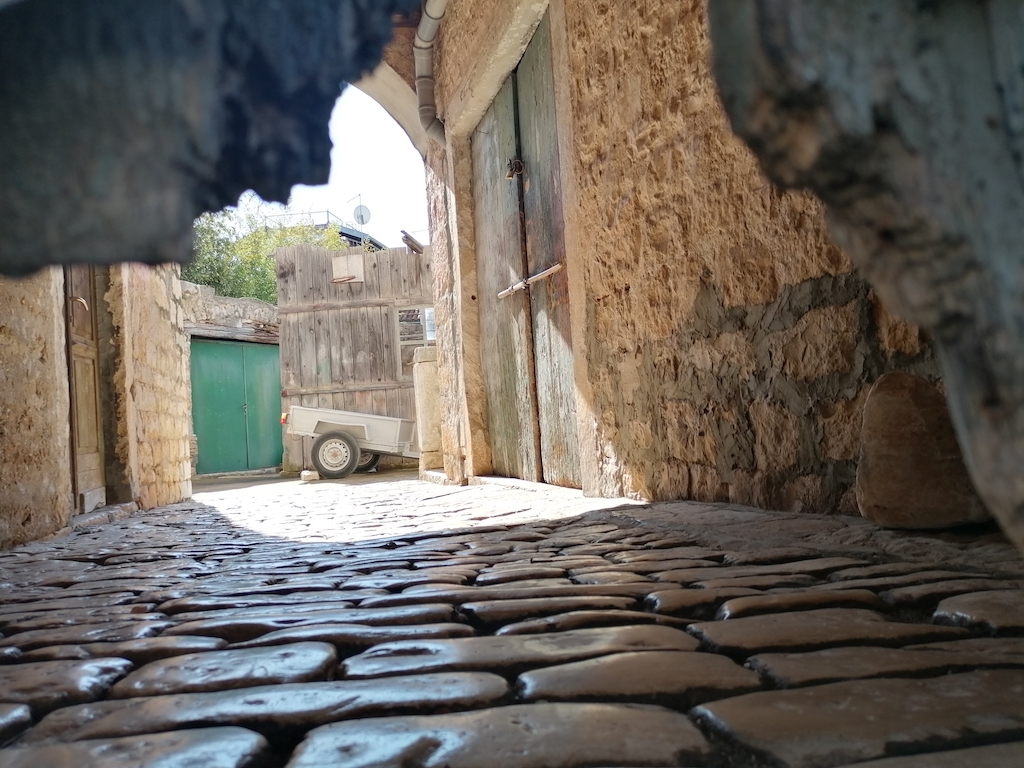
"It's hard to answer in one sentence about his 18 years of the presidency," I started to draw back the fire. Milan, that's his name, interrupted me. He told me that our president is a strong person he'd like to have as a major somewhere in Dalmatia. He said that he'd like to get vaccinated with the 'Sputnik V' vaccine. I guess that these statements should be regarded as a gesture of goodwill to me in any case.
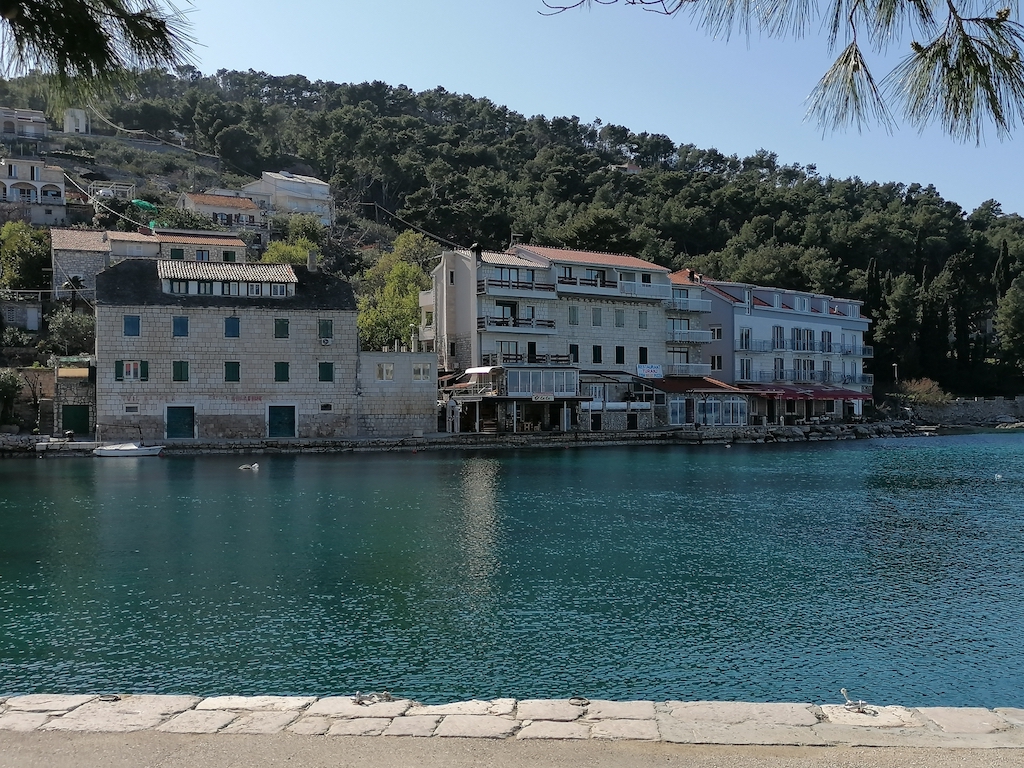
Actually, Milan knows about Russian-Croatian relations much more than the average person. He knows admiral Mate Zmayevic (born in the city of Perast, Dalmatia) who fought for Peter I in the Northern War, Alex Dundic (born in the village of Grabovac, Dalmatia) who fought for the Red Army in the Russian Civil War. He listens to Russian opera stars Elina Garancha, Anna Netrebko, Dmitry Khvorostovsky, and others. It's surprisingly pleasant for a broad-minded person far from tourist and nomad routes.
2. Take the initiative to talk to locals on the island.
Solta has wonderful nature and climate. Traditions of producing olive oil, wine, and honey here originate from ancient times. But since Solta Island is not very popular among tourists, you'll need to make more effort to get it. Even as you go to the island already prepared by informational sources, you have to be ready to ask, perhaps, to clarify something about wine tasting, olive oil tasting, or a honey farm. You go here ahead of the masses, take the initiative to start a conversation, and keep it!
I regret that I did not answer 'yes' to Milan's question of whether I was a journalist. Then I'd have more chances to guide our conversation to the topics I am interested in. Otherwise, it happened so that we were talking about themes that interest mostly a social group 70+-year-olds:
- life after death (Milan suffered two strokes and saw something on the other side);
- The Dulce Laboratory in New Mexico where human-alien hybrids were created;
- Orion correlation theory that says about the connection between the pyramids of Giza and the Orion belt;
- indigo children;
- masons, etc.
Certainly, I'd better answer that I'm a travel journalist and interested in things like what to eat, what to do, etc. So that, if somebody asks you on Solta, you can use the following answers I prepared in advance. "I'm a tourist from <...> and a wine lover."I'm a traveller and a gourmand hunting the local specialties."
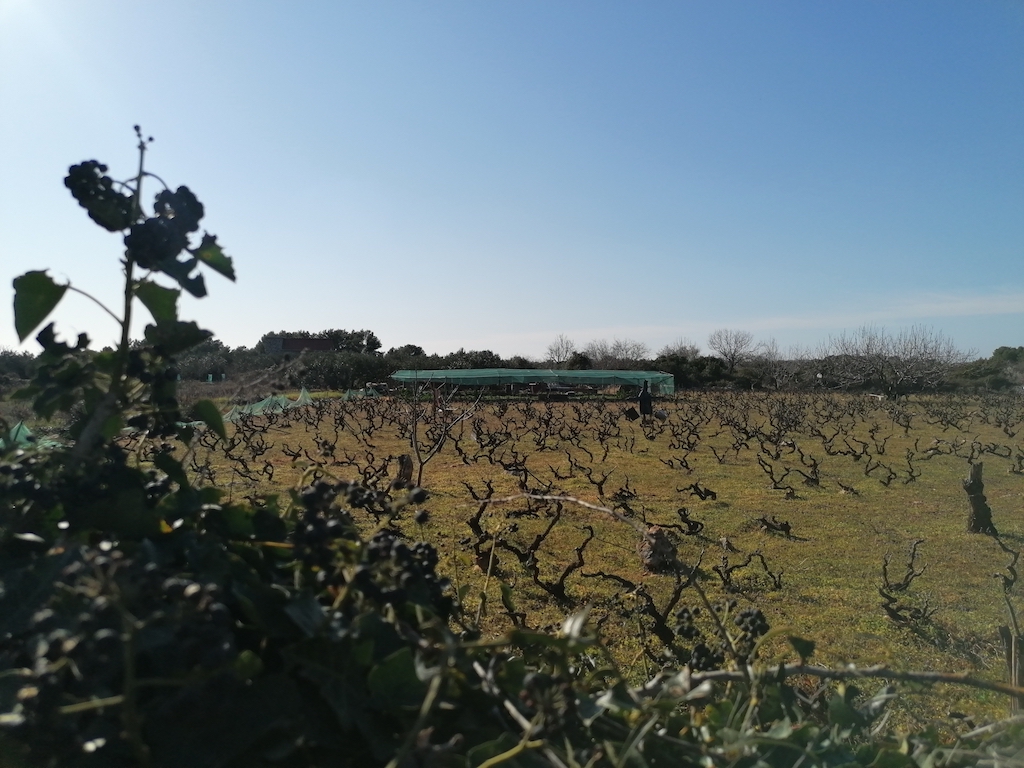
3. Don't be afraid to go around the island alone.
Saying goodbye, Milan wondered why I was here alone. "You don't have to go alone. Find yourself a husband. Not me, I'm too old for you, I'm over 72..."
I guess it was his joke about the age gap problem to marry me, because earlier he'd mentioned his wife was waiting for him at home, their three children, other common stuff.
Then he relented: "Well, all right, you can go alone. Don't be afraid. There are no poisonous snakes on the three Dalmatian islands - Solta, Lastovo, and Vis islands. But there are black widow spiders and ticks..."
As planned, I went through Grohote and Gornje Selo to Stomorska that I considered the most beautiful and lively town on the island. Besides, I was caught up in wanting to check a remark of my Croatian colleague that Stomorska on Solta looks similar to Povlja on Brac. He said it to me once I just got back from Brac. He really encouraged me, thus I'm not going to share if it looks similar or not. Go and check it by yourself!
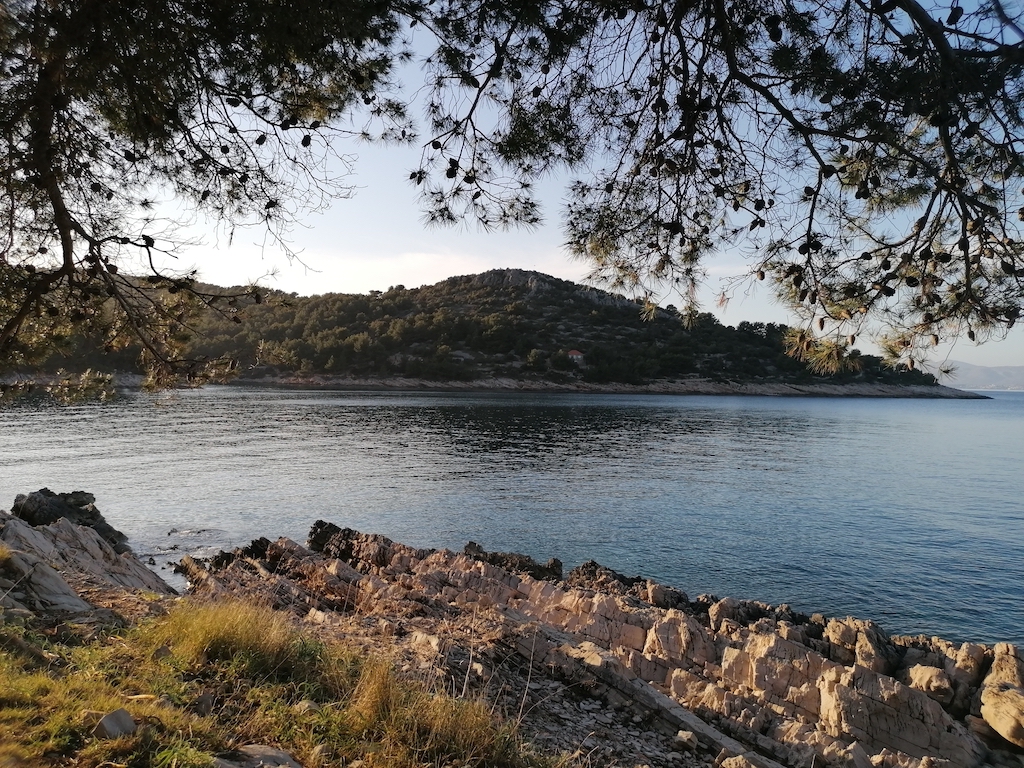
I went through almost all the island - from Rogac to Stomorska - by foot. It was a safe and quiet way, not a lot of cars passed me. For sure, it'd be more convenient to go by bicycle, but if you have the time it's possible on foot. On my way back I accepted a proposal of one passing car to take me to the port. I guess you can also have this possibility in mind. As far as there are no regular buses, it's a kind of local solidary to take somebody by car.
One difficulty I faced in Stomorska was the fact that all the cafes and restaurants were closed. I came before the beginning of the tourist season and caught the middle of constructing and cleaning works around terraces, but it was closed. We might endlessly watch water, fire, and other people working, but not on an empty stomach.
4. If something goes wrong, you can always sleep on the beach.
I didn't plan on going to Solta a second time. I have already visited the largest and most beautiful town of Stomorska. I met a wonderful grandpa Milan who told me that Split needs a mayor like the Russian president and that our bodies are just food for aliens secretly dealing with the government. What else is needed?
Then my Split friend Andrea tried to convince me that the most beautiful place on the island is Maslinica, not Stomorska. Andrea knows it for sure, because her aunt lives in Maslinica, and she's there every summer.
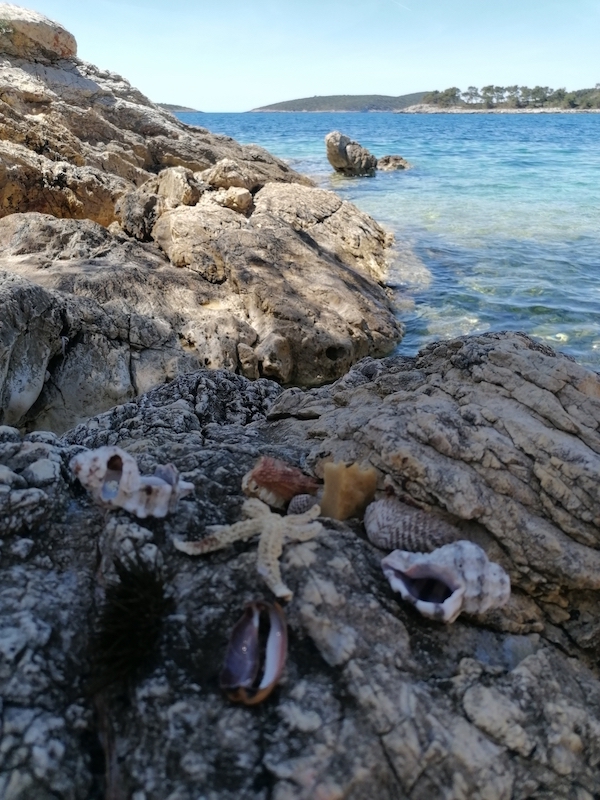
However, I still couldn't decide whether to go - to Brac or Solta - for Saturday sunbathing. At the last moment, I blurted out "Solta" at the checkout. "On the first ferry, please!" I totally forgot that the first ferry is at 6:40 am. "Nevermind, I'll go to sleep earlier today!" Then I recognised this ticket purchase was a fundamentally wrong decision. That Friday we celebrated Sveti Duje, the day of the saint patron of Split. There was no chance for me to escape the celebration and go to sleep earlier.
A suddenly emerged thought saved me from the desire to throw the ferry ticket into the sea from the pier where we celebrated Split City Day in the middle of an incredible post-covid standard crowd until 2:00 am. I thought that I could sleep on the beach of Maslinica on Solta. After 3.5 hours of sleep at home, I packed up and ran to the ferry.
5. Sometimes it is helpful to talk to a homeless man.
Solta is the closest island to Split. By ferry, one way takes only one hour. Once I'd settled on the ferry, I fell asleep. Thank you to the kind Croatian woman next to me who woke me up! At the port of Rogac I checked Google maps - 2 hours walk to Maslinica. 20 minutes later I reached one of the three 'towns' of Solta where you can find a supermarket.
Entering the supermarket I noticed a very colorful homeless man on the bench in front of it. He looked like Ali Baba. Red down jacket, harem pants, white apron, blue hoodie tied around the neck instead of a scarf. Fingerless gloves. A black beret holding a tuft of long gray hair and a gray beard. I had to restrain myself from taking a picture of him. I was not going to sponsor his vodka.
I had to restrain myself, but failed at the checkout. Too good a type! He was standing on the other side of the glass door while he noticed me taking a picture of him. He was waiting for me at the exit. "Take an initiative talking with locals. Don't be afraid!" I calmed myself. "Please, sir, may I take a picture of you?"
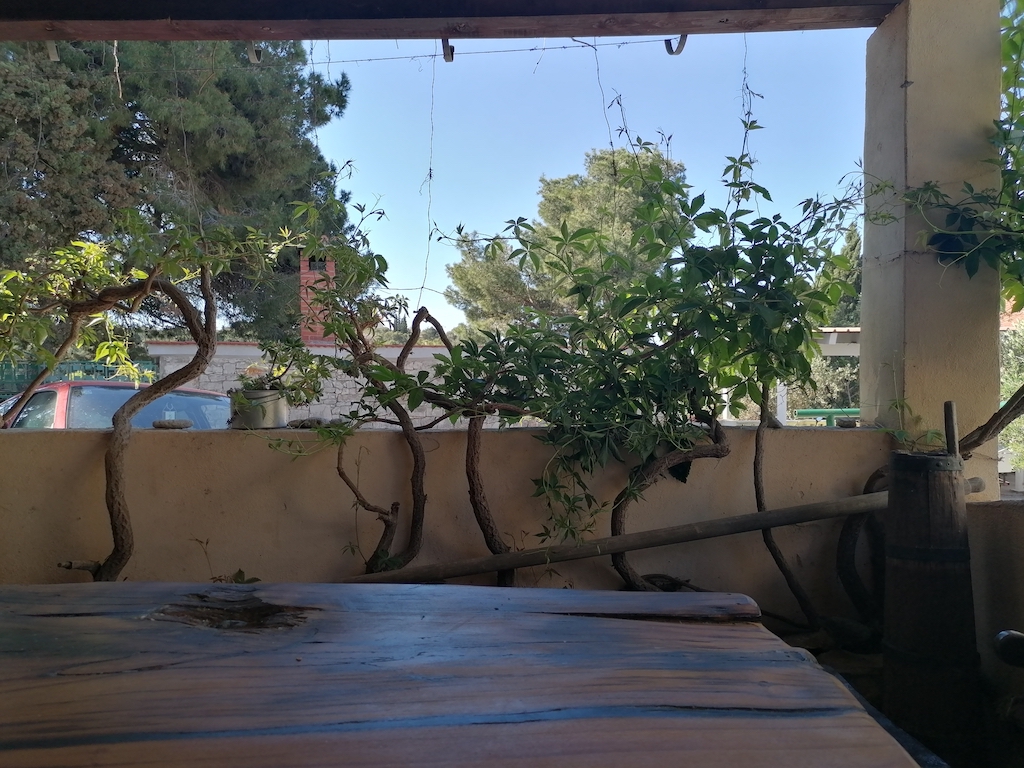
On the fifth attempt, the homeless man guessed that I was from Russia. Novorossiysk (Russian port) - Izmail (today's Ukraine) - Gori (Georgia). That's in general how his path in USSR looked like. His work had something to do with the sea as I understood. "I had a great company in the Crimea," he said. "I still remember those five Russian women surrounding me: Lyuba, Zoya, Nina..." It seems to be true, in those days the names were popular in the Soviet Union. The man was in Poland as well, in the Czech Republic. He worked in France for six months, then in the United States...
He remembered a few sentences in Russian. Here on the island, there were some Russian girls in Necujem. He taught them three main phrases in Croatian:
- Mi se svije Hrvatska. (I like Croatia).
- Ja ću se udati za Dalmatinca. (I will marry a Dalmatian man).
- Ja sam dobra pička. (I'm a good p***y).
Well, I can trace some logical connection here...
6. Have a list of souvenirs from Solta.
Homeless Ali Baba asked me how long would I stay in Croatia. He began to think about what souvenirs should I send to my family in Russia. Solta olive oil, Solta honey, Solta wine, Rogac bean for baking, lavender...
"I will collect it for the next time you come to Solta. I have oil, wine, a farm, 7 chickens, 2 houses... You can sleep in one of them, and I'll stay in the other. Is it okay? Take some lavender I picked this morning. Here you are. Do you know that there are two types of lavender? Do you want a chocolate bar?"
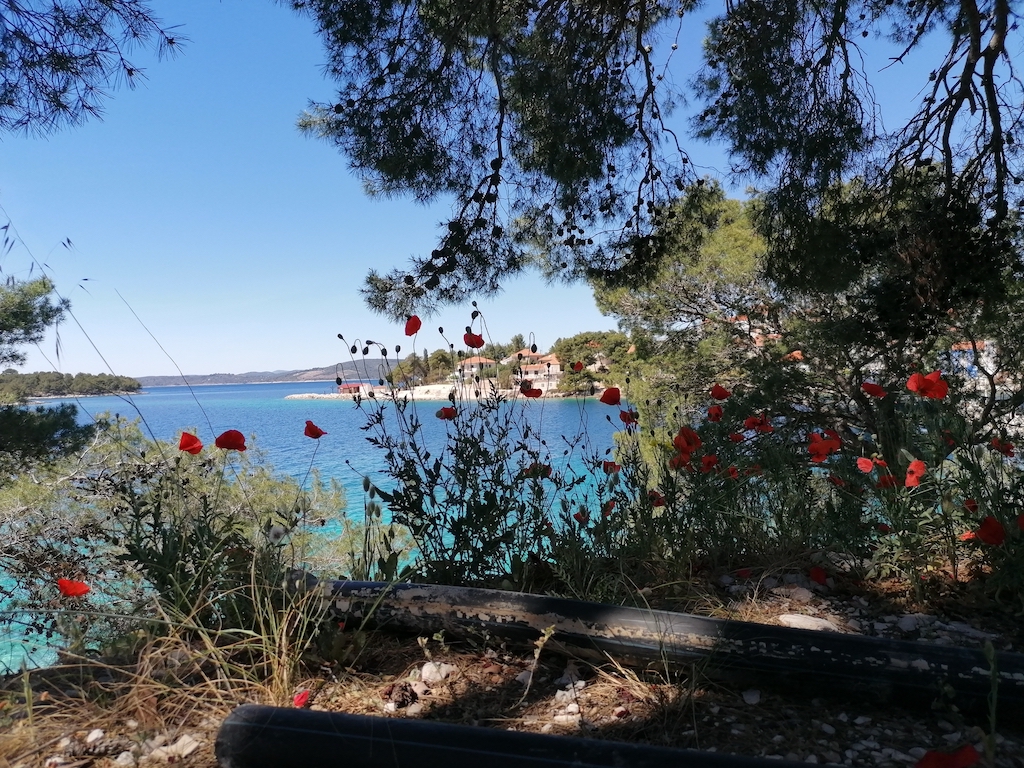
I jumped aside as Ali Baba touched me with lavender. Flowers do not excuse the whole stench. And the worst thing was his long nails. I was at a loss. Some parts of his story seemed plausible. However, I could not find any logical connection between his own farm and the homeless look. Two houses? I'm not going to believe in it.
The situation that we were standing in the center of the town nearby the only supermarket seemed even stranger. People passed us by us every five minutes. They greeted Ali, in response he defiantly showed me to everyone. "Look, such a beautiful Russian is talking to me!" Passersby looked at me with a grain of compassion, but they passed by further. Then one of the passers-by had heard that I was on my way to Maslinica and offered to give me a ride. He was going in the same direction. Thank you, Igore! I quickly got in the car.
Recap
1. Clothes do not make the man.
In the end, I got to Maslinica in 15 minutes by car, not in 2 hours by foot. On the way, Igor explained to me that Marin Kumin (that's the true name of 'Ali Baba') was not homeless. He does have things he mentioned. He's not a foolish man. Unfortunately, he went crazy in the sea about two years ago. Since then he has not been washing, shaving, cutting his hair. It looks scary from the outside. But he's not what he seems to be.
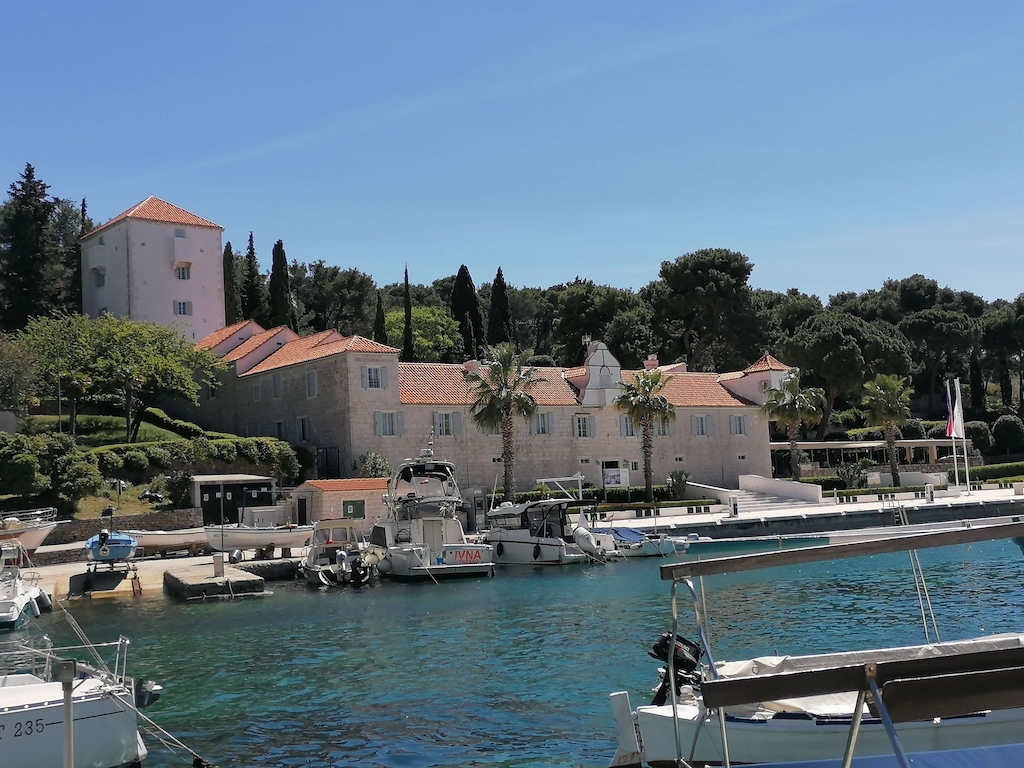
2. Take the initiative to talk to locals on the island.
I would probably consider the breakfast that Igor fed me after we came to Maslinica - coffee and toast with Solta honey - as a part of traditional Dalmatian hospitality. But the best lunch I've had in Dalmatia would never happen if I had left his place in a rush, without any conversation. I asked about a fishery on the island - I had lunch with Igor and his friends-fishermen. We ate the tuna they caught the day before. I had only known about tuna from canned food and Hemingway's story 'The Old Man and the Sea'. My concepts were turned upside down. Eventually, I found an island where there's more fish than meat.
3. Don't be afraid to go around the island alone.
Igor showed me the Maslinica neighborhood, Martinis-Marchi castle, and a way to a beach. Then I went alone to an empty rocky beach. I swam also alone, although there were some yachts around. No fear. I was a little worried that nobody will notice if I drown. But as I got out the beach marine officers asked me about the temperature of the water and how I felt.
4. If something goes wrong, you can always sleep on the beach.
It was my first swimming this year. The water at the beginning of May was still cold. I swam for five minutes. Never mind, then I slept on the beach. And then I swam two more times.
5. Sometimes it is helpful to talk to a homeless man.
I mean a keen conversation, lavender and the fresh tuna I had!
6. Have a list of souvenirs from Solta.
Try to do it in advance, because when you come outside the tourist season, it's complicated to get the souvenirs immediately. I didn't succeed to take a bottle of Solta olive oil on the same day, so I had to go back again.
For more on travel in Croatia, follow TCN's dedicated page.
Lastovo-Korčula-Dubrovnik Daily Catamaran Service Introduced by TP line
May 24, 2021 - The TP line company for transport by sea introduced the Anastazija ferry service: Lastovo-Korčula-Dubrovnik daily catamaran around the year.
The vessel can cater to 300 passengers and develop a speed of 27 knots.
The ticket fare is 95 kuna during the peak of the summer season for this 75-mile route and 75 kunas outside that period, whereas local islanders are entitled to a lower fare, 60 kunas.
Presenting the new transport service, Dubrovnik-Neretva County Prefect Nikola Dobroslavić said on Monday in the Port of Gruž that this was a great thing for locals from Lastovo. He noted that the government had ensured HRK 12 million as the subsidy for this line.
For more on travel in Croatia, follow TCN's dedicated page.
HRK742K So Far Spent on Tomašević's Campaign, Nearly 251K Collected in Donations
May 24, 2021 - The Mi Možemo and Zagreb je Naš political groups supporting the mayoral candidate have spent 741 598 kunas on Tomašević's campaign of this candidate for the new Zagreb mayor. In contrast, they have collected 250,668 kunas in donations, according to the data they provided last Friday.
On 21 May, the We Can party and its coalition partners submitted an updated financial report on the campaign's funding in the run-up to the Zagreb mayor's elections.
The report shows that they have received donations from 631 individuals and legal entities.
The average amount of a donation is thus HRK 397.25.
This Green-Left coalition shows that the funding for the campaign mainly relied on smaller individual donations provided by residents, which they interpret as a sign of broad support of the local population.
They also thanked all who raised funds for this campaign.
(€1 = HRK 7.503288)
For more about politics in Croatia, follow TCN's dedicated page.
Relaxation of Restrictions Possible Before 1 June Due To Good Trends
May 24, 2021 - The head of Croatia's COVID-19 crisis management team, Interior Minister Davor Božinović, said on Monday that relaxations of restrictions could be eased even before 1 June, including the opening of restaurants' indoor sections.
Also, the capped number of people at a location will be raised from 25 to 100.
Furthermore, the area required for one person will be four square meters instead of the current seven square meters, Božinović said after the crisis management team held a meeting with Prime Minister Andrej Plenković.
Open-air fairs can again be organized, and the working hours of hospitality establishments will be extended to 2300 hours.
The team will continue evaluating the developments, and a new set of relaxations can be expected after mid-June.
For all you need to know about coronavirus specific to Croatia, including travel, border, and quarantine rules, as well as the locations of vaccination points and testing centers across the country, make sure to bookmark our dedicated COVID-19 section and select your preferred language.
Croatian Cinemas With 70% Fewer Visitors in 2020
May 24, 2021 - Croatian cinemas had 48% fewer shows and 70% fewer visitors in 2020 than in 2019 because of the pandemic, and they also saw a 70% drop in gross revenue, the State Bureau of Statistics (Statistics) DZS) reported on Monday.
Due to the lockdown of cultural and educational institutions caused by the pandemic, most cinematographers (51%) worked between seven to nine months.
There were 99,106 shows and 1,503,306 visitors. There was a significant decrease in the number of shows and visitors in all counties, with the exception of Karlovac County, where the number of shows and visitors increased compared to 2019.
Croatia has six summer cinemas, and they registered the opposite trend, reporting 108% more shows and 53% more visitors compared to 2019.
Summer and traveling cinemas had the smallest decrease in revenue (-11%).
"It's obvious that a lot more viewers decided to watch films outdoors due to the circumstances and epidemiological measures," DZS said in its report.
In 2019 the annual gross revenue from regular cinematographic content amounted to HRK 160,365,123 and HRK 1,351,524 from alternative content, whereas in 2020, it amounted to HRK 47,474,883 HRK 252,302, respectively.
The fall in revenue inevitably meant a fall in the number of workers (-14%).
The data is based on annual reports submitted by cinematographers.
Last year there were 75 cinematographers in Croatia, 46 of whom had one screen while 22 had more screens.
Croatia had a total of 174 cinemas with 34,303 seats.
For more on lifestyle in Croatia, follow TCN's dedicated page.
Croatia Covid-19 Update: 74 New Cases, 26 Deaths
May 24, 2021 - In the past 24 hours, 74 coronavirus cases and 26 COVID-19 deaths have been registered in Croatia, the national COVID-19 response team said on Monday.
The number of active cases stands at 3,263, including 1,211 hospitalized COVID-19 patients, of whom 116 are on ventilators.
Currently, 13,795 persons are self-isolating.
To date, 1,973,701 persons have been tested for the virus, including 2,704 in the past 24 hours.
Croatia has registered 354,060 coronavirus cases to date, including 7,929 fatalities, while 342,868 persons have recovered from it, including 666 in the past 24 hours.
Through 23 May, 1,582,821 vaccine doses have been administered, with 1,181,255 persons receiving both shots and 401,566 one.
For all you need to know about coronavirus specific to Croatia, including travel, border, and quarantine rules, as well as the locations of vaccination points and testing centers up and down the country, make sure to bookmark our dedicated COVID-19 section and choose your preferred language.
Exhibition of Photos Taken by Randa Maroufi To Be Staged in French Institute
May 23, 2021 - A photographic exhibition entitled "Intruders" by French Moroccan artist Randa Maroufi officially opens in Zagreb on 1 June as part of the celebrations of the 100th anniversary French Institute in Croatia.
The exhibition presents an inversion of the archetypal notion of culture with women as "intruders" who have the same gestures and stature as men in public spaces: playing cards, watching a football match, sitting in cafes, and so on.
The exhibition is part of events organized by the French Institute in Croatia and the French Embassy, ahead of the Forum for equality of the generations, a global feminist conference chaired by France and Mexico and will be held in Paris from 30 June to 2 July.
In addition to Maroufi's exhibition, the institute will organize round table debates on gender-based violence and autonomy of the body, sexual and reproductive health, and rights.
Maroufi will be in Zagreb herself from 30 May to 3 June. She graduated from the National Institute of Fine Arts in Tetouan, Morocco, and the School of Fine Arts, Angers, in Le Fresnoy in France.
She has received many awards for her films Le Park (2105), Bab Sebta (2019), and Les Intruses (2019).
She has conducted exhibitions throughout the world. They include the Reina Sofía Museum, Spain, New Museum, USA, Boghossian Foundation, Brussels, Belgium, and the Biennale de Dakar, Senegal.
The Zagreb exhibition in the French Institute will remain open until 30 June.
For more on lifestyle in Croatia, follow TCN's dedicated page.
University of Zagreb To Make it Possible For Students To Study Gaming
May 24, 2021 - Five faculties of the University of Zagreb have joined their forces to establish gaming-related courses available for final-year undergraduates.
Studying game design and development will be made available at the university's drama school. At the same time, the other partners in this program are the Faculty of Electrical Engineering and Computing, the Academy of Fine Arts, the Faculty of Organization and Informatics in Varaždin, and the Faculty of Architecture.
The graduate study program will be part of the project Edu4Games and will offer four strands: Game Design, Game Art, Game Production, and Game Programming.
These future courses are envisioned so that the teaching and learning processes are focused on artistic and scientific practices and research, intensive practical work, and strong international cooperation with leading higher education institutions and professional organizations.
In the beginning, 20-30 students will enroll in this program.
For more news in Croatia, CLICK HERE.
Predicting Fertility Is Now Easier than Ever: Meet the Revolutionary me.mum!
May 24, 2021 - The new method, me.mum, only needs a drop of saliva for analyzing hormones and predicting fertility. The project aims to present a reliable solution for all women and couples who are planning a pregnancy or trying to conceive but are experiencing difficulties.
As we hear about the latest technological advances and discoveries, the first thing that comes to mind might be a Tesla truck or a new social network available in the app store. Thus, we wonder, what purpose does technology serve? We believe, therefore, that today's progress in the technology industry is dictated by the latest trends, whims, and social needs of the human being (and it is worth clarifying that it is not all bad).

me.mum
But it also depends on where we look, because not every day people and ideas appear willing to change the course of, for example, the way we know about family planning and predicting fertility. A Croatian entrepreneur, based on her life experience, decided a few years ago to take action on the matter and revolutionize the way in which women can better know their bodies and plan the desired pregnancy with their partners through an innovative method, and it only requires an easy-to-use device and a mobile application.
In 2015, after two years of expectations, disappointment, and hopes, Maja Bujas felt pushed towards four years of developing me.mum, which is an innovative portable fertility monitor and app that can accurately predict women's fertile days by analyzing the levels of luteinizing hormone (LH) from saliva. Its technology is built from scratch, and provides personalized insights into women's hormone profile, and detects the most fertile days, which significantly increases the chance of conceiving. Chances of getting pregnant are higher when women can identify their fertility window. me.mum combines the most popular methods of determining the fertile days: period calendar and measuring luteinizing hormone (LH) from saliva, instead of urine.

Maja Bujas, founder of me.mum
After conceiving the idea, the research and development stage followed. In 2017, the first functional models and app were designed. In the two following years, two prototypes of me.mum were developed, and in December 2020 the final product was completed. That way, after four years of development and two prototypes, Maja can finally share one simple to use solution for all women and couples who are planning a pregnancy or trying to conceive but experiencing difficulties. When you are trying to conceive, the most important thing is to determine your fertile days. With me.mum you will do it easily and simply.
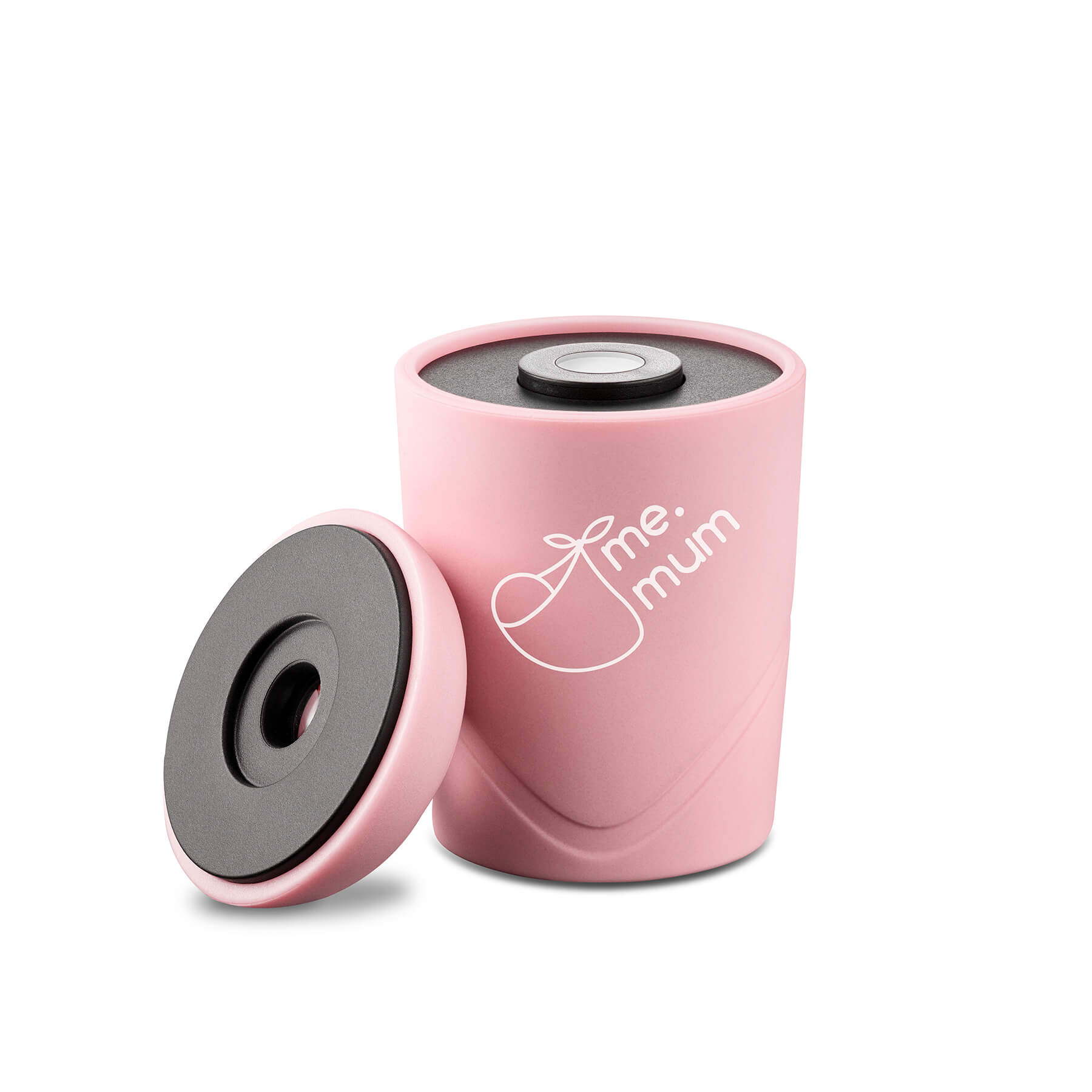
Its use is very practical and easy to learn for all those interested in predicting fertility in few steps. The best time to use me.mum is in the morning, but you can use it during the day too. Before using, it is important not to eat or drink anything, except water. That way your saliva will be clean. According to Maja and her team of developers, the process of using me.mum can be summed up in only three easy steps!
Currently, the product is already on sale in the early-bird mode, in which all those interested in buying it can access an exclusive price. The market price will be €119, but at this time one can order it through two packages: one for €59, which includes the smart fertility monitor device and the me.mum app. The other, for €69, also includes an online nutrition course for boosting your fertility. The estimated shipping date worldwide will be July 2021. The app will be available as soon as the first me.mum devices are delivered.
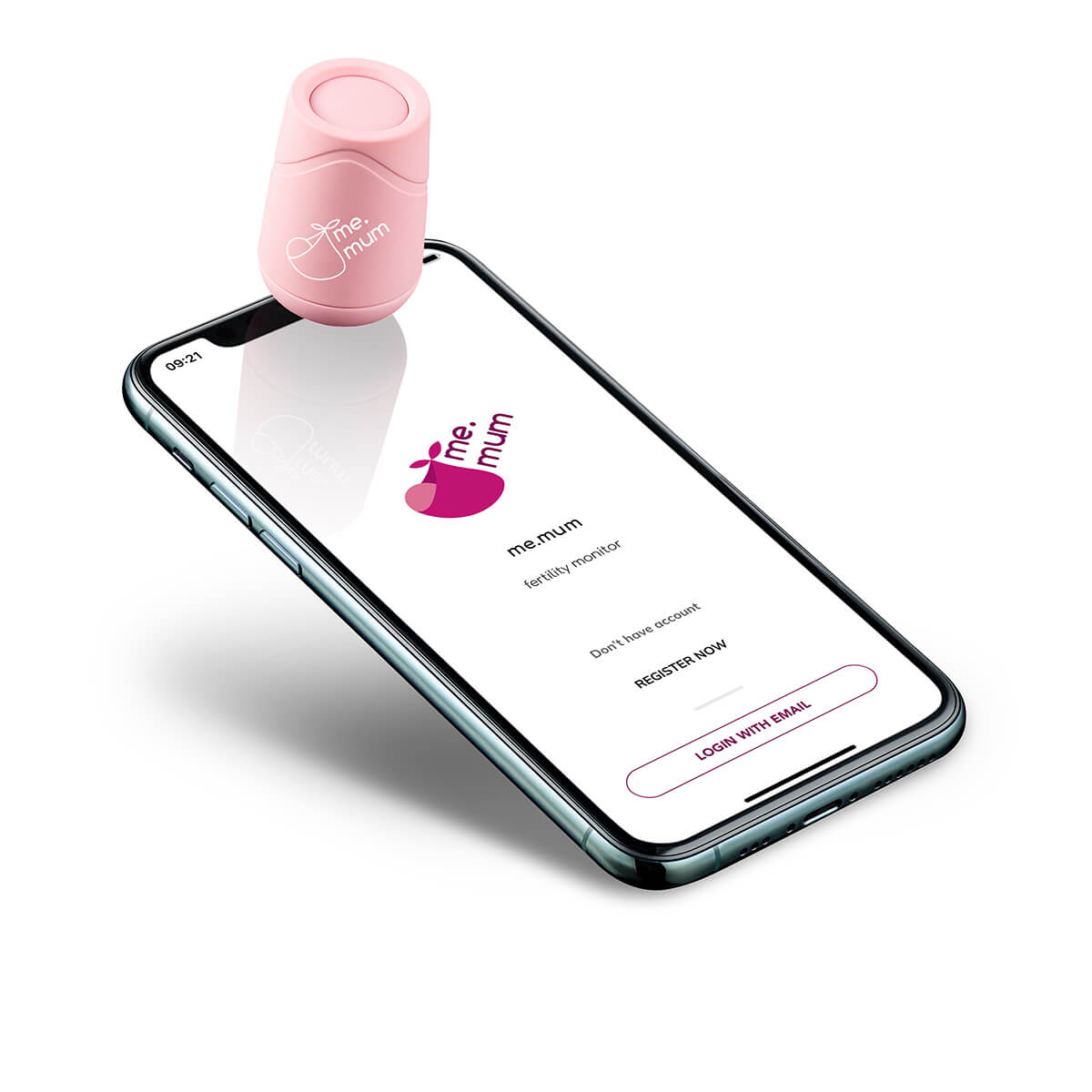
Likewise, the me.mum crowdfunding campaign is still in effect, with 25 more days for all those willing and interested in collaborating with its developers, who would like to hear feedback from the early users and grow the me.mum community. Also, through their crowdfunding site, you can learn more about me.mum, the team behind its development, how to use it, any updates in purchasing and shipping, and more!
For more, follow Made in Croatia.


